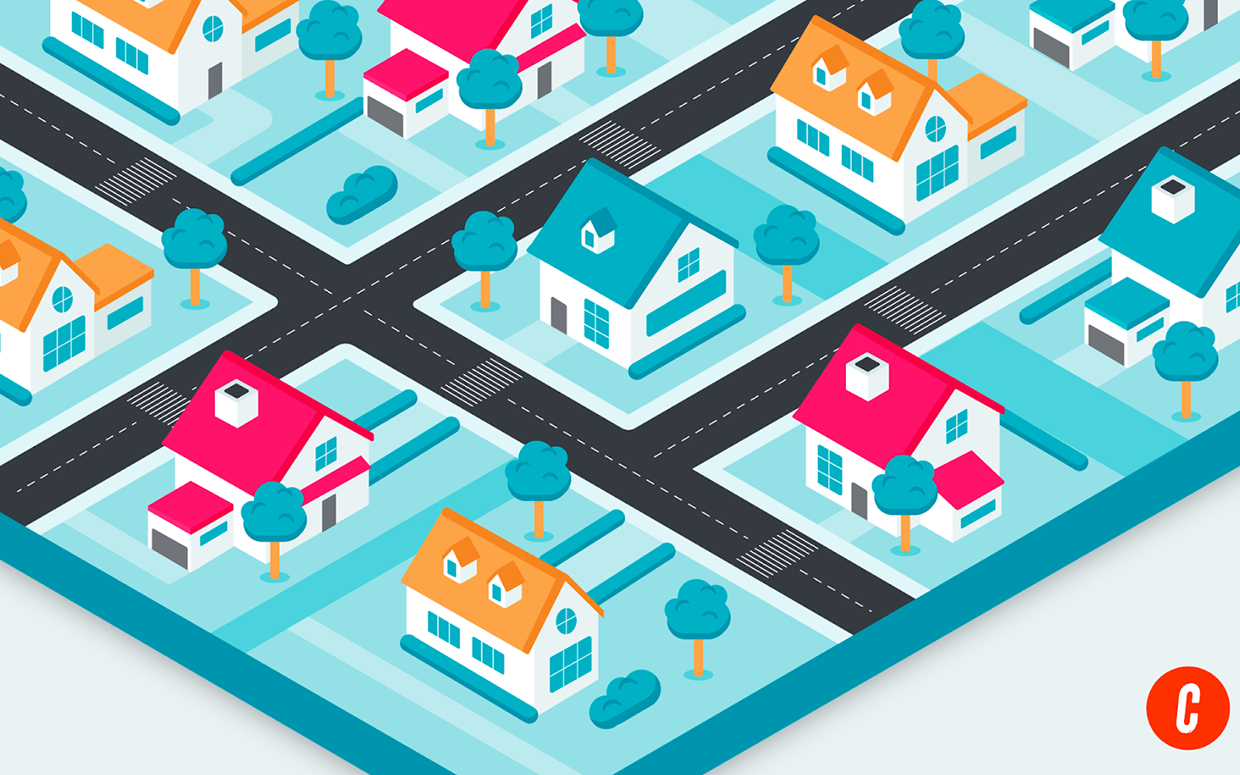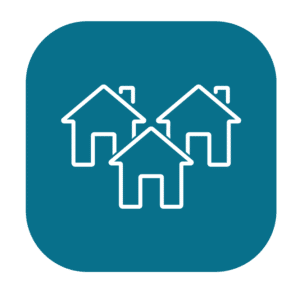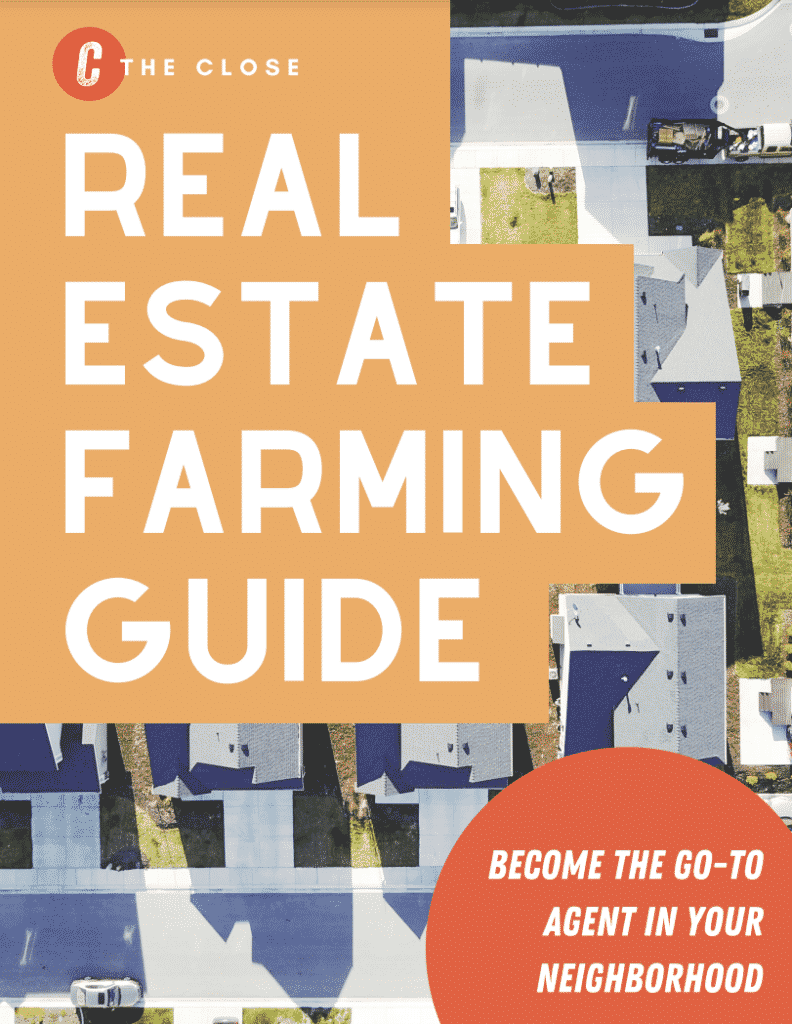In my experience, farming for your real estate business can be one of the most lucrative and dependable lead generation strategies for agents. It’s easy to get started, reasonably inexpensive, and just think: Your commission from selling just one home could pay for your farming efforts throughout the year. We’ll walk you through our detailed approach to farming, outline the costs involved, and review all the tools you’ll need.
To help you get started, we created the Ultimate Real Estate Farming Strategy Guide for those who want to dive in headfirst. Download our comprehensive, proven resource for all things farming!
What Is Farming in Real Estate?
Real estate farming is a lead generation and marketing strategy agents use to generate consistent business from a specific geographic area.
Agents “farm” a specific neighborhood by providing consistent value while cultivating relationships and generating leads that evolve into long-term clients. This practice also helps build a reliable business. Ultimately, the goal is to become the local expert and go-to agent for a particular geographic area.
📌 Pro Tip
Geographic farming is not to be confused with demographic farming, where you focus marketing efforts on a set of people such as first-time homebuyers, seniors, military personnel, or even equestrians or golfers. You can read more about great real estate niches here.
Real Estate Farming Ideas
Ready to start farming real estate? Here are the four basic steps to this powerful strategy, plus the budget you’ll need to get started in your first year.
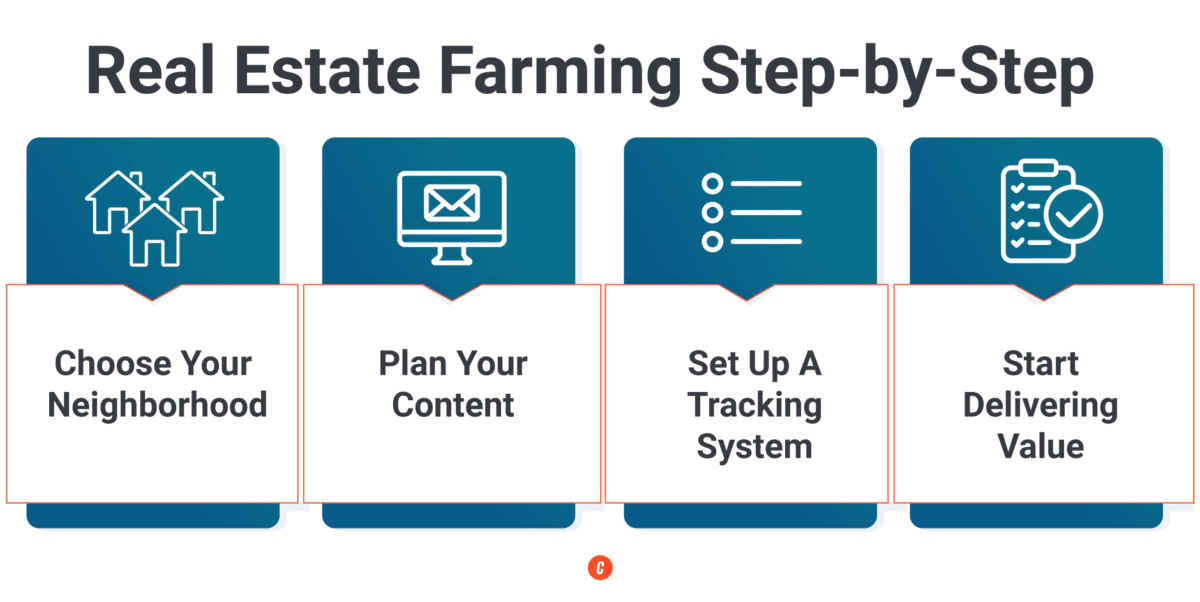
1. Target the Right Neighborhood
The success of your farming strategy depends on choosing the right area. A good farm includes between 100 and 250 homes. Each home you add to your farm increases your budget. You’re looking for consistency. Many agents start with too many homes, can’t keep up, and drop their farming efforts after only a few months. Keep your farm small to maximize your effect and lead generation probability.
Using some easy napkin math, find an area where there’s healthy demand and where homes are actively listed for sale with a solid turnover rate. There is no point in farming an area that isn’t very active.
To get the rate of homes sold/turnover rate, look back 12 months to see how many homes were listed for sale in your farming area, and how many sold. You can find this information in Zillow or your multiple listing service (MLS). We want to know the rate of homes sold to tell us how many months of inventory are in this neighborhood. Take your time frame (let’s say, one year or 365 days) and divide that by the number of homes sold.
For example, if there were 16 homes sold in your farm over the last year, we can divide 365/16 to get 22.8. So now we know that for your farm area, the rate of homes sold is roughly 23 days.
Stick with me to get the absorption rate. Let’s say there are two active listings in your farm. To do this math, we’ll multiply the number of homes sold by the rate of homes sold (which we just calculated).
So we will do 2 x 22.8 = 45.6 (or about 1.5 months). That’s a reasonable absorption rate—the average varies, but as a quick rule, you’re looking for less than three months.
Now you know that the current market conditions of the farm you’ve chosen are pretty hot—as long as market conditions remain consistent.
Next, gather information on your farm area and get to know the market backward and forward. In addition to understanding average sales prices and days on market (DOM), you’ll need to be knowledgeable of the average age and income of homeowners, typical home styles and age, local employers, upcoming developments, zoning and permitting regulations, neighborhood amenities, and other local agents who might be competition. Use the tools at your disposal, like your local MLS and market reports from a place like Altos Research.
Arming yourself with neighborhood knowledge will immediately help you stick out when you get a lead from your efforts.
Download the Ultimate Real Estate Farming Strategy Guide
2. Plan How & When to Deliver Value to Your Farm
Agents crushing the neighborhood farming game deliver consistent value to residents in their farm areas. Successful outreach is more than papering the neighborhood with your branded message. It’s about offering something helpful to locals, like a market report, local event, social media group, or a neighborhood website.

This neighborhood strategy goes a long way in easily establishing you as the local expert. It’s also easy to do—once a month, send out your postcards to your farm. We like PostcardMania for this because their designs are simple. Try to include images of the recently sold homes—your farm will recognize the homes and they will come to associate you with the neighborhood.
PostcardMania is offering our readers $50 off their first purchase when you use the link below.
3. Make a Plan to Manage & Track Your Leads
Your real estate farming leads differ from those you pay for or capture on your website, so be sure you’re tracking them separately. A solid customer relationship manager (CRM) allows you to tag farm contacts individually as well as automate digital communication like email or text messages. It also creates a record of the value you’ve delivered over the life of your farming activity. Plus, you can carefully track each reply to ensure you promptly follow up at every point of contact.
Check out all our top CRM picks in our guide to the best real estate CRMs. Our choice for the best overall real estate CRM for 2023 is LionDesk—it’s affordable and packed with real-estate-specific features ideal for farming.
4. Start Delivering Value
You’ve chosen the right farm area, made a plan to deliver consistent value, and set up a system to manage and track your interactions. Now it’s time to set up your automated communications and send out high-touch outreach with postcards and market updates.
Successfully farming a territory combines long-term automated communication and smart, day-by-day personal follow-up. Staying consistent is key—and you should start to hear from your potential clients after a few months. However, if you treat farming as a set-it-and-forget-it strategy, you won’t be as effective. Now that you’ve set up your strategy, it’s time to go outside the box—think neighborhood events, knocking on doors, and circle prospecting your farm. We’ll dive into that next. But that’s all to say: If you’re active in the communities you serve, your clients (and your wallet) will thank you.
Are you looking for more clever real estate marketing ideas to up your game? We’ve got you.
📌 Pro Tip
SmartZip is an all-in-one listing and lead farming tool with a proprietary algorithm that aggregates data from more than 30 top data providers nationwide. It uses Smart Targeting – an automated marketing solution, Smart Targeting uses Smart Data to build marketing campaigns across multiple platforms to target your leads. These SmartZip-identified potential sellers will see marketing from you in the form of direct mail (postcards and letters), email marketing, and ads across social media and Google. You can review every piece of marketing before it goes out to ensure the messaging is in line with your brand and business model.
Where Does Social Media Fit Into Real Estate Farming?
Social media doesn’t replace traditional farming techniques but can go a long way in enhancing them. Many local neighborhoods have their own Facebook groups. Some homeowner associations also have dedicated websites and social profiles, not to mention active residents on social platforms. We’ve got you covered if you’re looking for a deep dive into social media post ideas. The Close’s own Sean Moudry suggests this proven, unique social media approach to farming:
Start by connecting with members of your farm area using your personal social media profile. Then, using Facebook, create a custom audience for specific posts that include only the people in your farm.

Sean’s strategy is great for promoting any neighborhood-specific content you’ve created for your website, like market updates or neighborhood guides.
Essential Real Estate Farming Tools You’ll Need
Learning how to farm a neighborhood in real estate requires a high level of organization, a solid execution plan, and—of course—the necessary tools to consistently deliver value to your farm area.
Regularly Scheduled Real Estate Postcards
-
Frequency: Once or twice per quarter
-
Typical annual cost (250 homes): $1,260
-
Our suggested provider: ProspectsPLUS!
-
The Close resource: Real Estate Postcards Providers + Postcard Examples That Actually Work

Direct mail is the backbone of your farming campaign. Postcards and flyers are the ideal tools to convey messages, statistics, and authority to your farm area.
Use direct mail to deliver quarterly touches. Mix it up with a snapshot of the market, recipe, inspirational quote, joke, or sports schedule—anything that will provide value to your recipients. ProspectsPLUS! has dozens of geographic farming campaign postcards, perfect for quarterly mailings that keep you top of mind.
On-demand Postcards
-
Frequency: Whenever a home is listed or sells in your farm area
-
Typical annual cost (250 homes): $1,584
-
Our suggested provider: LabCoat Agents
-
The Close resource: Circle Prospecting Case Study

If your regularly scheduled postcards are like a dependable, professional handshake, then on-demand postcards are your unexpected high-five. Use this marketing tool to make homeowners aware of market activity in their community, especially after a property sells.
Sending about 250 postcards to the homes in your farm area, most similar to the market activity you’re highlighting, is a wake-up call to homeowners. You provide valuable information and insight into their financial opportunities if they also sell.
If you don’t already have a postcard provider you work with, we like LabCoat Agents, known for their effective, real estate-specific templates—including that perfect “just sold” postcard.
Farm-specific Content on Your Blog
-
Frequency: At least monthly
-
Typical annual cost (250 homes): Free (as long as you have a website)
-
Our suggested provider: Placester
-
The Close resource: Viral Real Estate Blog Ideas (+ Examples & Expert Tips)
Your farm area should have a dedicated section on your website where you can post weekly updates about the micro-neighborhood market, neighborhood goings-on, and even events in and around town. Your content can be short and sweet, with five or six sentences and a picture.
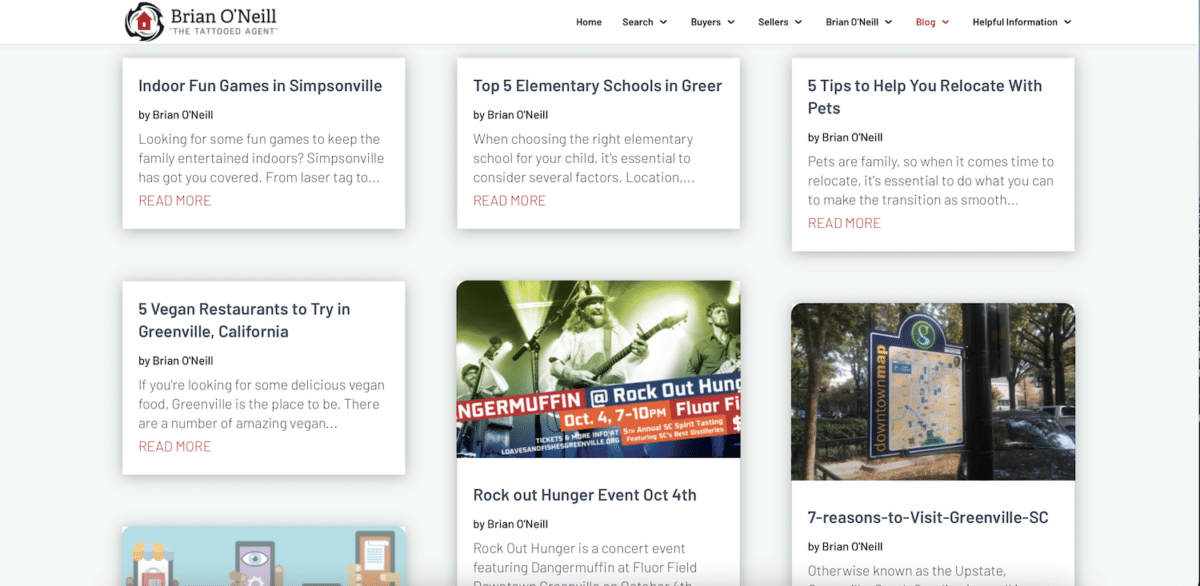
Remember, your website serves two purposes: to act as an online hub for your neighborhood and to show potential clients that you’re the go-to expert. Placester offers a package with unique, custom content to add to your site, including prewritten social media posts.
Market Update Letters
-
Frequency: Quarterly
-
Typical annual cost (250 homes): $550
-
Our suggested provider: Coffee & Contracts
-
The Close resource: Our Best Real Estate Prospecting Letter Templates
A real estate letter can share in-depth, thoughtful market insights and analysis, but it’s also a chance to talk about what’s going on in your business or give shoutouts to those doing good work in your community. Share messages that communicate that you’re the expert for buying and selling homes, but—perhaps just as importantly—you’re also the expert at living in your community.
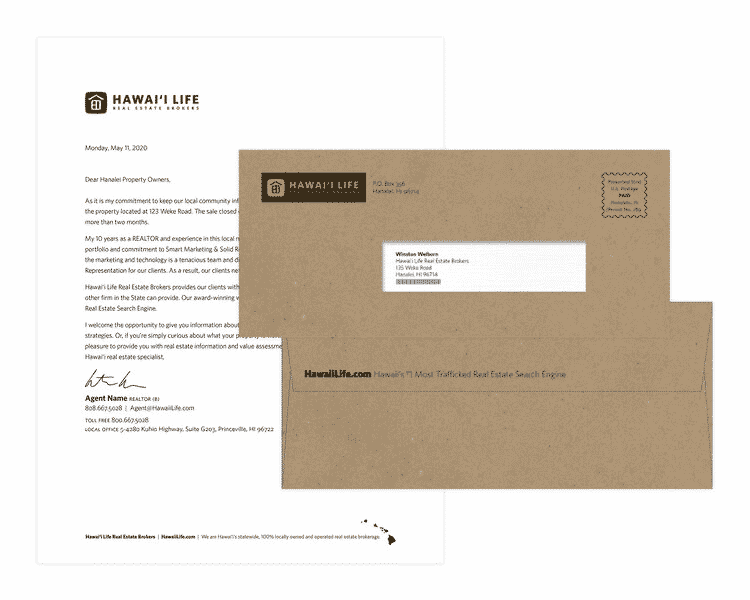
If you’re farming a luxury, higher-end neighborhood, consider your design elements. You can use a service like Coffee & Contracts to put together a high-end, aesthetically pleasing, branded market update for your farm.
Neighborhood Website
-
Frequency: New content one to two times a month
-
Typical annual cost: Starting at $3,500
-
Our suggested provider: Easy Agent Pro
-
The Close resource: Best 7 Real Estate Website Builders
With Easy Agent Pro, you can create an unlimited number of neighborhood sites. This helps establish your credibility and improves your website rank in the top results for SEO. For example, Keeton & Co Real Estate has 19 different neighborhood sites for Goochland, Ga. Each one of these sites includes a small summary of the area, notable points of interest and activities, nearby restaurants and amenities.
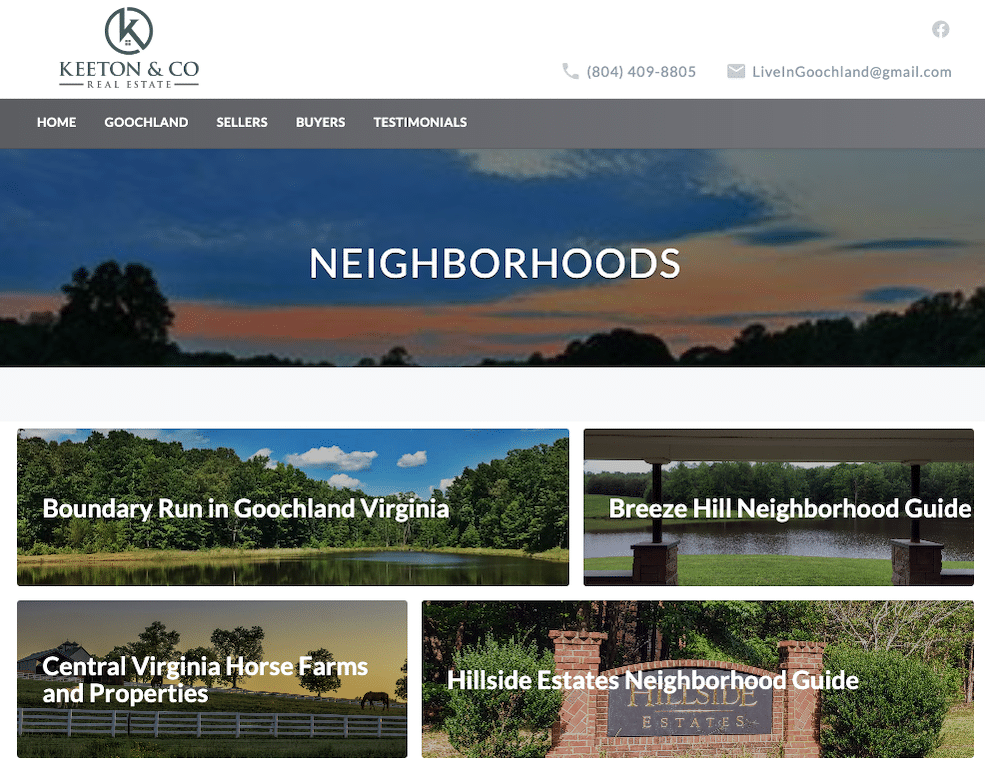
As a tip, also try including interviews with neighborhood business owners, local news, coupons, and, of course, all the latest information about the real estate market.
Our suggestion for this platform type is Easy Agent Pro. Easy Agent Pro creates websites for you that are focused on driving engaged leads directly to your website. There are other providers on this list that focus on SEO, but we like how easy it is for agents to make small edits to these premade pages. Book your free consultation below.
Door Hangers for Your Annual Door-knocking Session
-
Frequency: Once a year
-
Typical annual cost: Starting at $100
-
Our suggested provider: Canva
-
The Close resource: Fun Real Estate Door Hanger Ideas to Inspire You
Door-knocking isn’t everyone’s cup of tea, but it’s helpful to remember that you’re not going into these neighborhood walks cold. When you kick off your door-knocking weekend, residents will have heard from you multiple times. They know of you, even if you haven’t met yet, and they should be familiar with the value you’ve already provided.

Your farming efforts will be significantly more effective if you’re intentional about getting face-to-face with the people in your farm. Leave a little something behind, like these brand-friendly, easily customized templates. Purchase a template on Etsy or create one with a free Canva account.
📌 Pro Tip
Remember safety when knocking on doors. Stay safe out there and ensure you have established precautions when door-knocking (letting another person know where you will be, or doing door-knocking with a partner, like a lender or another agent, are great ideas). Check out The Close’s Real Estate Safety Expert Tracey Hawkins’ article on Realtor safety tips to keep yourself out of harm’s way.
Automated Home Value Email Updates
-
Frequency: Once a month
-
Typical annual cost: Starting at $300
-
Our suggested provider: Homebot
-
The Close resource: 23 Real Estate Email Templates That Will Generate Business in 2023
Home values in this market are volatile. As your area’s go-to real estate expert, one clear way to personalize your expertise is to help nervous homeowners understand how volatility will affect their investments. After all, a family’s home is often their most significant asset.
If you want to automate this farming technique, consider Homebot. Using thousands of data points and the power of artificial intelligence (AI), the company sends automatic, consistent, and accurate information on what a home is worth (and if it’s incorrect, you can easily tweak it).
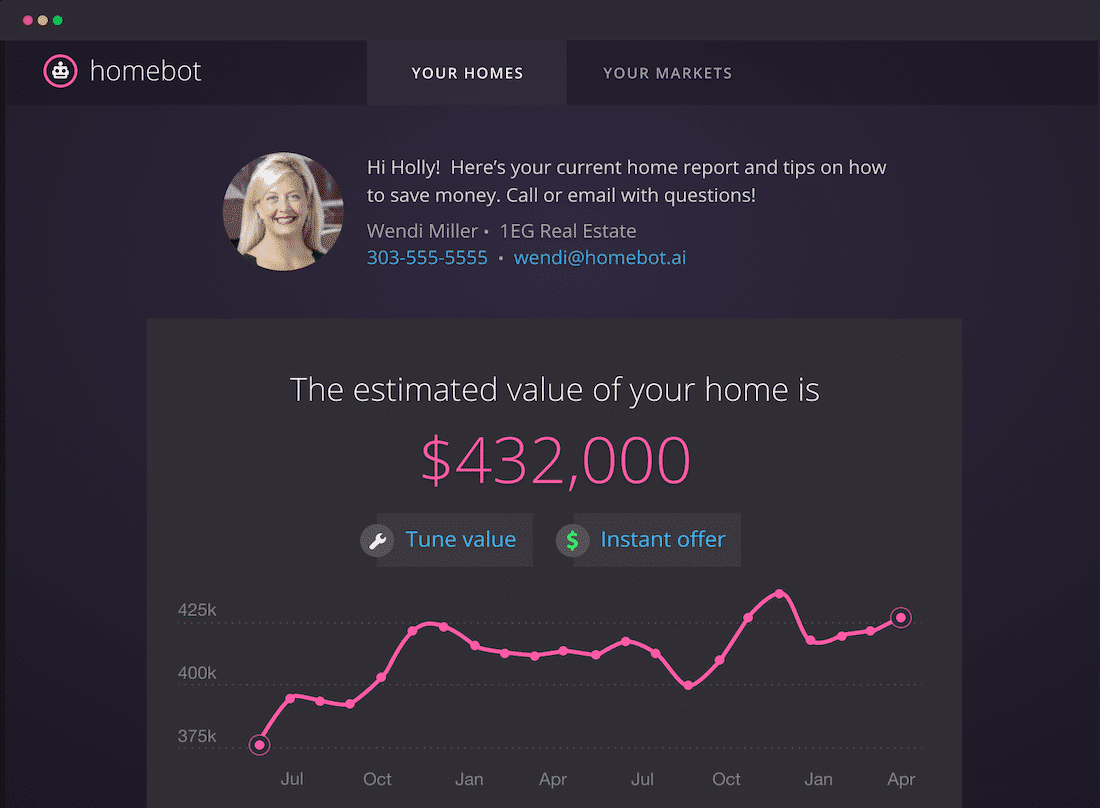
Many agents are hesitant to leave home valuation to the robots (and for good reason), but we’ve found that Homebot is much more accurate than Zillow, and it’s an easy way to nurture the owners in your farm on their home’s value. You can also partner with a lender on this tool to decrease your monthly cost. You can check out our full review of Homebot here.
An Annual Sponsored Event
-
Frequency: Once a year
-
Typical annual cost: Starting at $1,000
-
Our suggested provider: You!
-
The Close resource: Unique Client Appreciation Event Ideas
Whether you’re throwing a summer block party and BBQ, a holiday gathering, wine tasting, or a Super Bowl watch party, events are a fun way to meet and greet community members.
If you’re new to events, start with something you know will be a hit, like a pumpkin giveaway in October or a trivia night with great prizes. Or, try sponsoring a neighborhood garage sale, a community fireworks display in July, or a community service project with plenty of food and drinks afterward to celebrate all that hard work.
📌 Pro Tip
Another unique tool you could use in your farming activities is to deliver pop-by gifts. These small and inexpensive gifts you can send on an occasion, like a holiday, or to simply encourage interaction. To learn more pop-by gift ideas, check out our article, 15 Clever Real Estate Pop-by Ideas to Get More Referrals.
What Does It Cost to Get Started?
You can expect to pay some upfront costs for effective real estate farming, but the returns will repay your investment many times over if you remain consistent. Here’s my estimate of typical annual costs for a real estate farming operation with 250 homes:
| Regularly scheduled postcards (250 x 8 = 2,000; estimated cost $1 / card) | $2,000 |
| On-demand property status postcards (250 x 12 months = 3,000) | $3,000 |
| Quarterly letters (250 x 4 = 1,000) | $1,000 |
| Door hangers for your annual door-knocking session (250 @ $2 apiece) | $500 |
| Neighborhood website (e.g., Parkbench) | $3,500 |
| Farm-specific content for your website | FREE |
| One sponsored event | $1,000 |
| Total | $11,000 |
While this is a sizable investment, don’t forget to look at the big picture. If you’re farming a neighborhood where the typical home sells for $400,000, a single 3% commission equates to $12,000 in gross commission income.
In this case, a single property sale would recuperate your approximately $11,000 investment—and then some. The positive return on investment is clear if you turn over three or four transactions a year from your real estate farm area.
Real Estate Farming FAQs
Why is it called ‘farming’?
Think of what it takes to farm a big field of tomatoes. You must select the field, plow the soil, plant the seeds, stake the plants, weed, prune, monitor, track progress, and eventually harvest the tomatoes. It’s not a stretch to think about real estate farming in the same way: It requires careful preparation, attention to detail, and some patience for the process to bear the fruits of your labor.
What kinds of activities constitute real estate farming?
Farming activities include sending direct mail, handwriting letters, hosting events, sponsoring local activities, building a social media presence, and even knocking on doors to introduce yourself and your business. It involves anything that builds relationships and trust in the people in your chosen territory and makes you a local authority in that area.
Why should my real estate farm be 500 homes or less?
When it comes to real estate farming, bigger is not always better. Geographic real estate farming is an effective marketing strategy because you target a specific set of homes with a message that adds particular value repeatedly. The more extensive the selection of homes, the less likely you can consistently deliver on your farming efforts—budget and time-wise. Keep your farm small to focus your message and deliver more value.
How much of my real estate farming message should be about the local market?
Market conditions and specific statistics can be powerful conversation starters in your real estate farm. However, these types of messages can get boring quickly for anyone not actively ready to buy or sell. So, I’d suggest using this general rule: Make 30% of your message about the market and the rest about the community.
What kind of results should I expect from my real estate farm?
It’s essential to track your efforts to determine the return on investment in your particular farm because every market is different. Your success depends on area-specific information, including the types of homes in the market, the sort of agent competition you’re facing in your neighborhood, and how long you’ve been active in the area.
What if another agent is already farming in that area?
Homeowners are looking for someone they know, like, and trust. One agent isn’t going to be right for every person in a particular neighborhood. Farming consistently creates value for owners—planting that seed for them to contact you when ready. You never know where things will be a year from now. As the saying goes, “Don’t judge each day by the harvest you reap, but by the seeds you plant.”
Keep your code of ethics in mind here—ensure that you adhere to any required disclaimers and local regulations to keep in good standing with the National Association of Realtors (NAR), local associations, and the MLS.
How long does it take for a real estate farm to produce results?
Real estate farming is not a strategy that produces overnight success. Though you may see some exciting immediate returns on your efforts, the farming leads you capture in the first three months will likely be people ready to buy or sell anyway. True farming success takes time. Give yourself a year with this strategy before analyzing and making changes based on your results.
Bringing It All Together
Real estate farming is an effective means of prospecting and developing a consistent source of seller and buyer leads. The best part about farming is that the rate of return on your investment improves over time as your messaging gets sharper, more people recognize you, and your sales stats in the neighborhood improve.
Have a real estate farming idea we didn’t cover? Let us know in the comment section!






